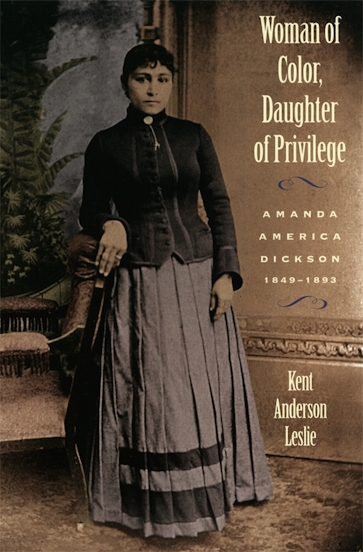Permanent marker: Augusta plaque honors 19th century Black female millionairePosted in Articles, Biography, History, Media Archive, Slavery, United States, Women on 2021-05-27 15:00Z by Steven |
Permanent marker: Augusta plaque honors 19th century Black female millionaire
The Augusta Chronicle
Augusta, Georgia
2021-05-21
Corey Rogers (center), historian at the Lucy Craft Laney Museum of Black History, and Elyse Butler (second from left), marker manager for the Georgia Historical Society, unveil the marker at 448 Telfair St. in Augusta commemorating the former home of Black millionaire Amanda America Dickson Toomer. At far left is building owner John Hock, who funded and supervised the home’s exterior renovations. Rogers (center), historian at the Lucy Craft Laney Museum of Black History, and Elyse Butler (second from left), marker manager for the Georgia Historical Society, unveil the marker at 448 Telfair St. in Augusta commemorating the former home of Black millionaire Amanda America Dickson Toomer. At far left is building owner John Hock, who funded and supervised the home’s exterior renovations. JOE HOTCHKISS/THE AUGUSTA CHRONICLE |
Harrell Lawson grew up in Hancock County in the 1960s, listening to tales about the old plantation across the road.
“I used to hear stories about how a Black woman used to own it, but I didn’t know my relation to her at the time,” he said.
More people know now. On Friday, a Georgia historical marker was unveiled in downtown Augusta to mark the home at 448 Telfair St. where Amanda America Dickson Toomer – perhaps the richest Black woman of the 19th century – spent the last seven years of her life.
Lawson, who maintains homes in Stone Mountain and Sparta, joined about a dozen other Toomer descendants at the marker ceremony in front of a renovated exterior that took months for John Hock, the house’s owner, to complete with a team of subcontractors.
While the outside has been repainted, refitted and repaired to match its original appearance, the inside has more modern features and will continue to be used as an attorney’s office.
“This whole project was to commemorate the life of Amanda, and I think we did it,” Hock said…
…Who was Amanda America Dickson Toomer?
Dickson was born in 1849 to prominent Hancock County plantation owner David Dickson and a 12-year-old slave. Legally a slave owned by her white grandmother, the biracial child was reared in her father’s household. She learned to read and write, and assumed the social graces of white Southern affluence.
When David Dickson died in 1885, he willed to Amanda 15,000 acres of land and about $500,000, which Amanda’s biographer Dr. Kent Anderson Leslie said equals more than $3 million today. Other modern estimates place the amount even higher.
Scores of Dickson’s white relatives emerged to contest the will, outraged at the prospect of a biracial, legally illegitimate woman inheriting such immense wealth in the post-Civil War South. But Leslie said at the ceremony Friday that the young heiress had a plan…
Read the entire article here.
